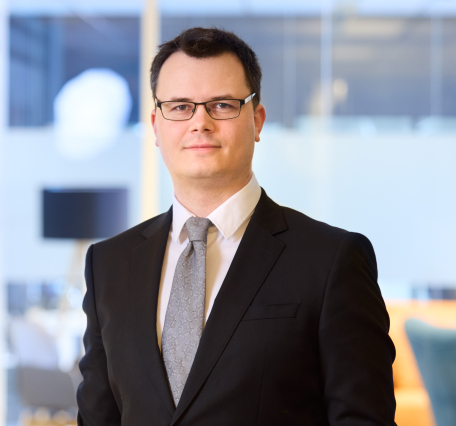

“Can I protect my surgery-related innovations? I heard surgery is excluded from patentability!”
However, the European Patent Convention (EPC) does define an exception in Art. 53(c). Among other things, patents will not be granted for methods for treating the human or animal body by surgery. This exception exists to protect patients: no surgeon should be prevented from performing surgery because of intellectual property rights.
Avoiding the exception
The exception has an effect on patent practice. The European Patent Office (EPO) does not grant a patent for a method if the patent’s scope of protection - the intellectual property defined by the claims of the patent - comprises a step of a surgical nature practised on a human or animal body. Drafting a European patent application therefore requires care when surgery is involved; the patent should be drafted so that surgical steps are clearly not part of the claims. Determining whether or not a claim comprises a step of a surgical nature is not easy, because that depends on what is considered a step of a surgical nature. Dustin Vink provides more details in this regard in his article on methods of treatment by surgery.

Avoiding the exception for medical devices
The safest way to avoid the exception may be to direct claims to a medical device rather than a method, because only method claims fall under the exception of Art. 53(c) EPC, not device claims. New medical instruments suitable for performing surgery (e.g., cutters, catheters) or for imaging a body (e.g., MRI or X-ray machines) can be patented, for example.

Avoiding the exception for algorithms
What if the invention does not concern a new medical device, but rather a new method or a new algorithm to assist surgeons? Can such a new algorithm be patented?
The answer is a clear-cut “yes, but”. Yes, new algorithms that assist surgeons can also be patented. However, inventors and patent attorneys must devote extra care to drafting the patent to avoid the exception of Art. 53(c) EPC. Let’s look at an example.
In the case T 2136/19, the patent in question related to a medical data processing method suitable for assisting a surgeon in positioning a first medical structure relative to a second medical structure, for example, positioning a medical implant relative to a bony structure of a patient. The invention is phrased as a computer-implemented method that can be executed by a computer processor.
According to the patent application, the processor compares landmarks acquired in projection images (e.g., pre-operative x-ray images) with landmarks acquired directly on the patient’s anatomy (e.g., by a surgeon palpating the patient’s anatomy). The result of the comparison is shown to a surgeon as “correspondence information”, enabling the surgeon to verify the correct position of the medical structures relative to each other.

According to the Board deciding on this case, there was a potential problem to be solved: how can the EPO ensure that the claims of the patent do not involve a step of a surgical nature? The Board came to the following conclusion.
- Initially, the claimed method step for the landmarks acquired directly on the patient’s anatomy was worded as “acquiring, by the computer, three-dimensional position data […] in three-dimensional anatomical space”. In the light of the patent description, the Board felt that this wording could be interpreted as involving a surgical step of obtaining the 3D position data by the surgeon palpating the patient's anatomy, for example, by the surgeon using a pointer to determine points on the bony anatomy of a patient.
- The Applicant submitted a new claim with the amended wording “receiving, at the processor, three-dimensional position data […] in three-dimensional anatomical space”. The Board felt that this amended wording successfully avoided the exception: the step of acquiring the position data itself was no longer part of the claimed method and the surgical step was not involved, because there was no longer a functional link between the claimed method and any effect of a surgical nature.
In this case, the patent was therefore drafted in a way that allowed the Applicant to avoid the exception of Art. 53(c) EPC. Ultimately, the claimed method was considered to be about assisting a surgeon with a purely “passive” data processing method that could be performed exclusively in a computer without causing any effect in the patient’s body and not involving palpating the patient’s anatomy or positioning of the medical structures.
Take away
In principle, new algorithms for assisting surgeons can be patented. However, whether or not a patent’s claim defining the scope of protection for the new algorithm actually involves a step of a surgical nature can only be determined on a case-by-case analysis. The example discussed above shows that the exception can sometimes be avoided by changing the wording of the claims.
Any questions?
If you have any questions regarding IP protection of medical devices, do not hesitate to contact us via Healthcare | NLO.
For more information on protection of IP of any matter please subscribe to NLO’s LinkedIn account.
Health Focus Group: NLO's special taskforce
You can read more articles on IP, healthcare and medical devices here:
- A matter of life and death in Healthcare | NLO
- Methods of treatment by surgery: tread carefully | NLO
For more information on protection of your intellectual property, please subscribe to NLO@LinkedIn or contact one of our IP experts: Healthcare | NLO.


